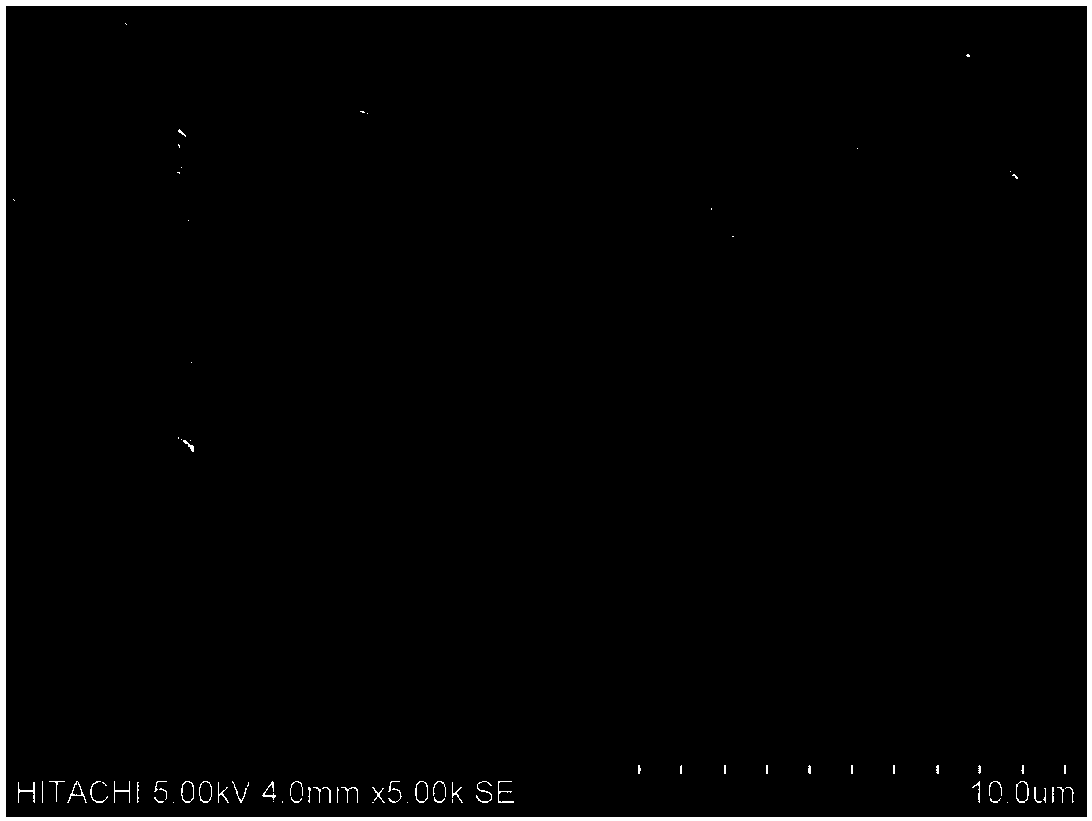Porous material with micro-nano structure and preparation method of porous material
A technology of porous materials and micro-nano structures, applied in chemical instruments and methods, other chemical processes, alkali metal oxides/hydroxides, etc., can solve problems such as high cost, complicated preparation process of porous materials, and high energy consumption. Achieve high porosity, excellent printing and forming performance, and a wide range of adsorbed substances
- Summary
- Abstract
- Description
- Claims
- Application Information
AI Technical Summary
Problems solved by technology
Method used
Image
Examples
Embodiment 1
[0031] 1. A porous material with a micro-nano structure, characterized in that, according to the weight percentage formula:
[0032] PLA65
[0033] PVA 20
[0034] TPU 6
[0035] Ethylene glycol 7
[0037] 2. The preparation method of the above-mentioned porous material with a micro-nano structure, comprising the following steps:
[0038] A. After mixing PLA, PVA, TPU, ethylene glycol and talcum powder, it is granulated by screw melt extrusion;
[0039] B. The obtained pellets are drawn into 3D printing wires by a wire machine;
[0040] C. Print the 3D printing wire into a specific structure through a 3D printer with a nozzle diameter of 0.1mm;
[0041] D. Dissolve the specific structure in water at a temperature of 40°C for 60 minutes to obtain a porous material with cylindrical pores mainly and a pore size distribution of 0.2-5 μm (such as figure 1 shown).
Embodiment 2
[0043] 1. A porous material with a micro-nano structure, characterized in that, according to the weight percentage formula:
[0044] PLA70
[0045] PVA 15
[0046] PCL 8
[0047] Polyethylene glycol 5.8
[0049] 2. The preparation method of the above-mentioned porous material with a micro-nano structure, comprising the following steps:
[0050] A. After mixing PLA, PVA, PCL, polyethylene glycol and calcium oxide, granulate through screw melt extrusion;
[0051] B. The obtained pellets are drawn into 3D printing wires by a wire machine;
[0052] C. Print the 3D printing wire into a specific structure through a 3D printer with a nozzle diameter of 0.2mm;
[0053] D. Dissolving the specific structure in water at a temperature of 50° C. for 30 minutes to obtain a porous material with mainly cylindrical pores and a pore size distribution of 0.1-4 μm.
Embodiment 3
[0055] 1. A porous material with a micro-nano structure, characterized in that, according to the weight percentage formula:
[0056] PLA 58
[0057] PVA 26
[0058] PCL 5
[0059] Glycerin 7.5
[0060] Magnesium hydroxide 3.5.
[0061] 2. The preparation method of the above-mentioned porous material with a micro-nano structure, comprising the following steps:
[0062] A. After mixing PLA, PVA, PCL, glycerin and magnesium hydroxide, granulate through screw melt extrusion;
[0063] B. The obtained pellets are drawn into 3D printing wires by a wire machine;
[0064] C. Print the 3D printing wire into a specific structure through a 3D printer with a nozzle diameter of 0.2mm;
[0065] D. Dissolve the specific structure in water at a temperature of 50° C. for 55 minutes to obtain a porous material with mainly flat-shaped pores and a pore size distribution of 0.3-6 μm.
PUM
 Login to View More
Login to View More Abstract
Description
Claims
Application Information
 Login to View More
Login to View More - R&D
- Intellectual Property
- Life Sciences
- Materials
- Tech Scout
- Unparalleled Data Quality
- Higher Quality Content
- 60% Fewer Hallucinations
Browse by: Latest US Patents, China's latest patents, Technical Efficacy Thesaurus, Application Domain, Technology Topic, Popular Technical Reports.
© 2025 PatSnap. All rights reserved.Legal|Privacy policy|Modern Slavery Act Transparency Statement|Sitemap|About US| Contact US: help@patsnap.com

